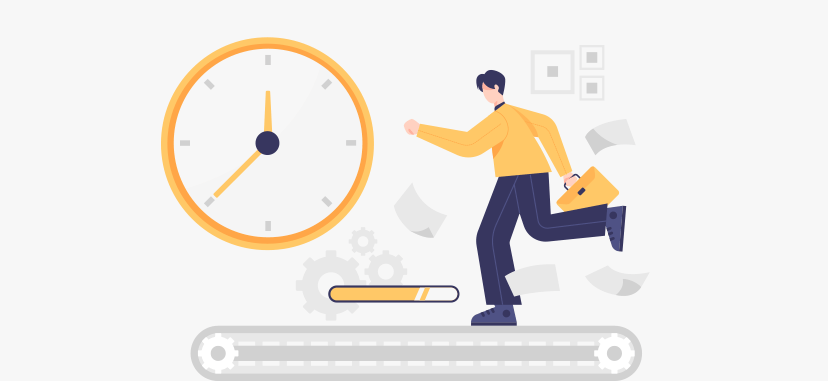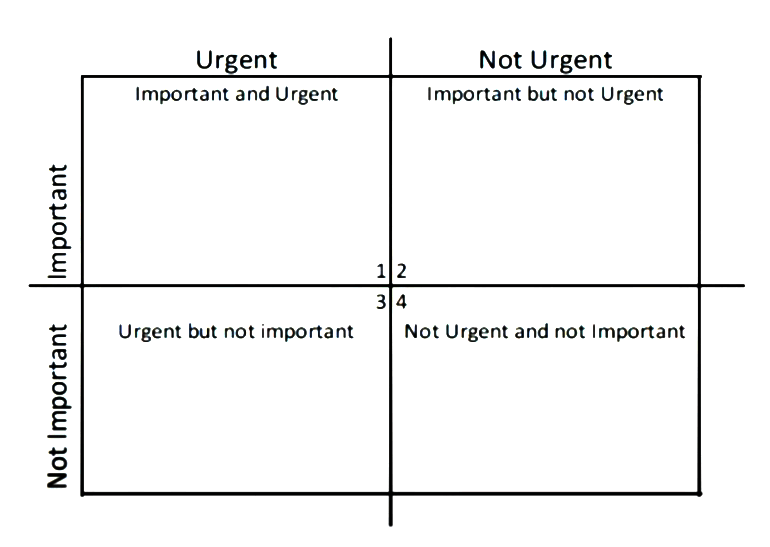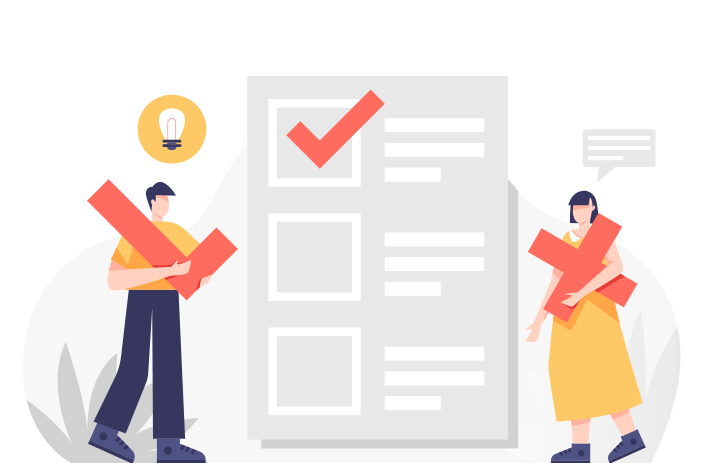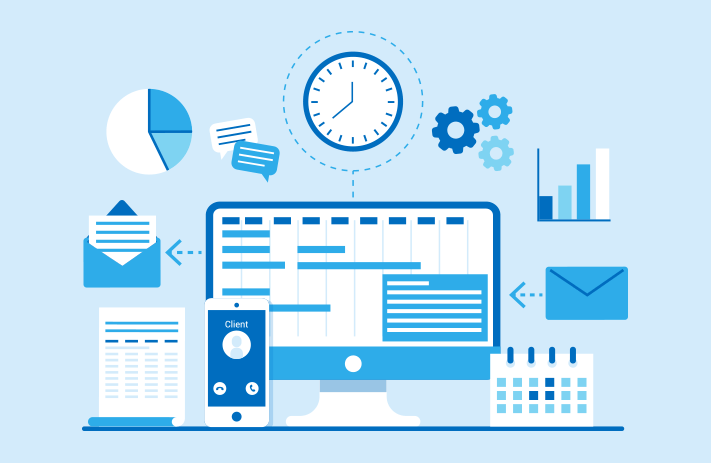
Click the button to start reading
How to Work Smart (Not Hard) With a Priority Matrix
Do you ever spend an entire morning doing something completely pointless, like cleaning up dog food spilled across the kitchen floor? And then, when you leave for work, nothing is accomplished. You haven’t worked out, checked emails, or even had breakfast.
If this is one isolated episode, that’s one thing. But sometimes entire days proceed in this fashion, and build into weeks full of bustle and activity where nothing significant ever gets done. The meaningful, value-adding work sits in the “to do” pile, like laundry waiting to be washed.
The 24 hours we have each day seems like a lot of time, but with deadlines to meet, bills to pay and projects to complete, time quickly becomes a scarce resource. And just like money, it’s so easy to squander and waste.
But don’t go thinking that productivity and time management are beyond you, because a solution is simpler than you think. For many, a four-box grid known as a priority matrix is the ticket to generating the momentum to focus and finish tasks.
Want to get in on this project management hack? That’s what we’re going to cover in this post.

The When, What & How of a Project Priority Matrix
A priority matrix is helpful whenever you need to sort and prioritize a multitude of diversified tasks, so it works well within teams, for community initiatives and even in personal planning. The matrix determines what to work on now, in the present moment, and what to postpone for later.
Steven Covey, the renowned businessman and keynote speaker, developed this matrix and its underlying principles in his bestselling book, The 7 Habits of Highly Effective People.
In its simplest form, the matrix is four quadrants that categorizes work according to two criteria: important and urgent. Urgent work requires immediate attention. These tasks have no workaround; if it doesn’t get done, then the lights turn off. Important works, rather, include tasks that bring value to the business or initiative. They contribute to a project’s overall goal.
In delineating work according to this criteria, Covery drives home the lesson that not everything that’s important is urgent, but more significantly, not everything that’s urgent is important. It’s easy to be allured by “urgent” tasks that have no importance at all, and fail to do things that really matter.
Utilizing the method, essentially, means parsing through an assortment of tasks and activities and categorizing them according to these criteria.

1. The Important and Urgent Quadrant
The tasks that fall into the important and urgent quadrant are critical. These are consequential tasks that have no workaround, and include things like paying bills and meeting deadlines.
Clearly, anything that’s both important and urgent must be completed right away. Ideally, however, the tasks in this category don’t usurp all your time.
2. The Important But Not Urgent Quadrant
The tasks in this quadrant lay foundations and build systems. They include things like strategic planning, networking and researching. They don’t have immediate deadlines, but if neglected, they may well move into the urgent and important quadrant.
As this work positions a project for success, ideally the bulk of your time is spent working on tasks in this category.
3. The Urgent But Not Important Quadrant
This is the category for time-wasters. The urgent but not important quadrant includes things like long-winded conversations in chat boxes, people who need favors, phone calls and back-to-back meetings.
This is a deceptive category, as it’s easy to spend a lot of time on these tasks and feel occupied. Yet all the while, none of the busyness adds any value or serves any overall business goals.
Ideally, you’d spend the least amount of time on this work. If this category is brimming with tasks, then delegation may be the solution.
4. The Not Important and Not Urgent Quadrant
These are the activities that you look forward to at the end of a long day. This final quadrant includes things like watching TV, scrolling through a FaceBook feed, or taking a long leisurely walk. Niksen, or doing nothing with intention, captures the essence of these activities.
Although enjoyable, ideally these activities consume only a small portion of one’s overall time.
How to Use the Matrix
These “urgent” and “important” criteria are benchmarked against the project’s overall objectives. A personal goal to develop a healthy lifestyle would classify urgent and important much differently than a development’s team’s objective to create an app.
A healthy lifestyle, for example, might have “lose weight” in the urgent and important category and “create healthy meals” in the important but not urgent category.
A software team who’s developing an app centers its important goals around the client’s objectives. What are the functional and non-functional requirements for the app? The urgent and important goals might center around meeting deadlines, while the not important and not urgent work might include generating reports that no one looks at anyway.
Creating the matrix is a process. Within a team, ideally, it’s developed and modified in face-to-face meetings. After mapping out the initial designations, the team engages in discussions and possibly moves things around. Then, it’s time to run water though the pipes and take action based on each task’s classification. This is the real test to identify if the activities have been categorized accurately.
Generally, each box ends up with multiple tasks, which presents a prioritization challenge all of its own. Sometimes the principle “eat the frog” provides the best approach to determine what to tackle first. This means selecting the dirtiest, hairiest work and getting it done, right out of the gate.
Other times, it’s best to focus and complete several small tasks and save the larger work for later. Whatever method, the objective is to create a plan that generates and increases team momentum.

The 5 Benefits of a Priority Matrix
The priority matrix is a deceptive little diagram. It looks almost too simple to be effective. But despite its simplicity (or perhaps because of it), it benefits a project in many ways.
1. Breaks Down Complex Projects
In a long or complicated project, it’s easy to fall into a pattern of playing whack-a-mole and constantly putting out fires. But the matrix provides an opportunity to step back and determine a plan of action that considers the project’s overall objectives.
2. Encourages Fast & Clear Collaboration
The concept of the matrix is easy to catch onto. This makes it an effective go-to at an all-hands meeting, where each stakeholder contributes to priority planning. The simplicity of the method allows everything to be prioritized quickly, providing a clear action plan.
The matrix is also a powerful visual. When the four quadrants are displayed on a large white board, everyone grasps the overall picture right away.
3. Provides Useful Signals
The method also provides key indicators around where to switch up a workload. After organizing work into the four categories, it’s possible to analyze how much work falls into each quadrant.
As discussed, ideally most work falls into the important but not urgent category. If the majority of the work, rather, is in the urgent and important category, this may indicate that work isn’t being completed in a timely fashion. When the urgent but not important category carries most of the weight, it indicates that the team may be focused on low value work requests.
4. Creates Momentum in a Team
The priority matrix aligns a team around its true north. It allows everyone to understand what is most important and what’s going to add value. This clarity creates efficiency and momentum around the completion of tasks.
5. Maximizes Value
Any project, whether personal or work-related, is about delivering value. The priority matrix places the things that matter most over the things that matter least, and so ensures the completion of value-adding work.
As you can see, there’s several clear benefits to incorporating a priority matrix into planning and strategizing. When combined with some other project management strategies, the matrix can really deliver a powerful punch.

The Matrix Supersized With Agile and Kanban
Generally, the prioritization matrix is an effective tool on its own. However, due to its simplicity it can run into trouble. For example, most projects evolve over time, and so the priorities it has at the beginning may change. And so it’s useful to combine the matrix with principles from other project management methodologies in order to make it relevant and increase its capacity in a variety of scenarios.
The Matrix With Agile
The Agile methodology emphasizes continual change. As its Manifesto states, it “welcomes changing requirements, even late in development.”
Within an agile framework, then, the priority matrix may be approached not as a fixed chart, but as a continually evolving diagram. With each retrospective and sprint planning session, the team revisits and reevaluates the chart and possibly makes adjustments based on recent developments.
The Matrix With Kanban
Kanban is a pull system that establishes work-in-process (WIP) limits. It creates a continual work flow within a team, as tasks must be completed before a new task is begun.
Fusing the priority matrix with Kanban doubles down on this focus and finish mentality. It clarifies to everyone what tasks need the most attention. The WIP limits forces the team to complete tasks, and move through the work at an energized pace.
As you can see, the priority matrix needn’t be used in isolation. Combining and adapting it with other methods actually increases the value it brings to a team.

The Matrix in Contrast With Other Prioritization Methods
The priority matrix certainly isn’t the only prioritization method out there. Let’s compare and contrast it with a few other popular methods.
The MoSCoW Method
The MoSCoW method was developed in 1994 by Dai Clegg, a software developer working at Oracle. “MoSCoW” really represents the acronym, MSCW. The vowel sounds are added to make it easier to pronounce. Each letter in MoSCoW represents a separate layer for task prioritization: Must, Should, Could, and Won’t. By organizing tasks into these categories, a team finds clarity around what it needs to work on right now, and in the near future.
MoSCoW is very similar to the priority matrix, except that it goes a step further and actually determines work to cut out completely.
While MoSCoW works particularly well in project planning, the matrix can be used at any point as an effective time management tool. MoSCoW is not a visual chart, and so the priority matrix has a step up in this respect.
The Four Ds (Eisenhower Matrix)
The four Ds is also known as the Eisenhower Matrix. It’s a simple system that’s also designed to sort through a myriad of tasks. The Ds stand for “do, delete, delegate and defer.”
For example, when we open our inbox to dozens of unread emails, the “4 D” system lets us identify those emails that need to be responded to right away, those we can delete, messages to forward, and those to put off until later.
The Four Ds helps with personal task management, while the priority matrix works within teams as well as in personal planning.
The RICE Scoring Model
The RICE model takes a different approach and evaluates a project by its Reach, Impact, Confidence and Effort.
While the priority matrix combines all kinds of tasks, both operational and project-related, the RICE model focuses primarily on a singular project. While the priority matrix is good for queuing the next activity, the scoring model serves to contrast the value of one project relative to another.
While each of these four methods are all very similar, each has its own strength, making it best suited for particular scenarios.
Conclusion
The priority matrix helps to cut through the clutter and identify the significant work that needs to be accomplished. It’s a method that works well within teams, and at any point in a project.
Although it’s always fun to waste an afternoon, when you have looming deadlines, time becomes a scarce resource and needs to be spent prudently. This matrix helps to prioritize work and so maximize how time is used.
What is your go-to method when you need to prioritize work?
















